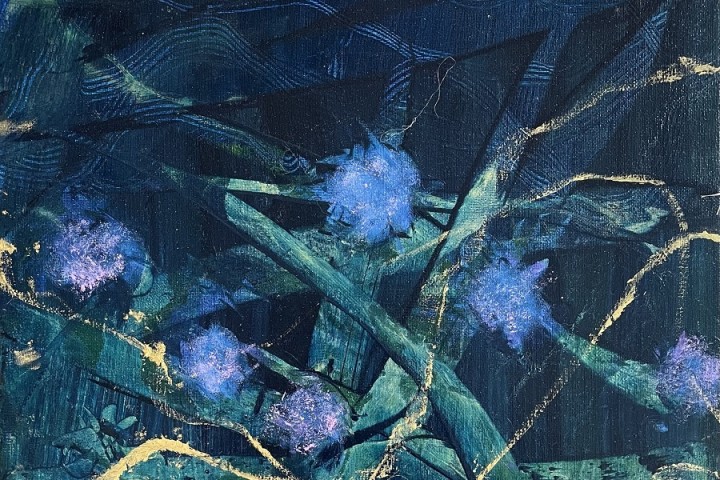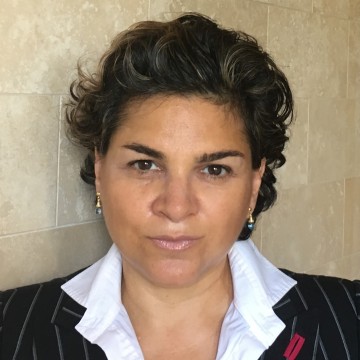Talking About Earth Day at Havre de Grace Maritime Museum

“Earth Day” globally celebrated on April 22, is a day to honor the Earth that was first proposed in 1969 at a United Nations Educational, Scientific and Cultural Organization (UNESCO) Conference in San Francisco. This year with a theme of "Planet vs. Plastics" a wide range of events are coordinated by Earthday.org in more than 193 countries, to demonstrate support for environmental protection from plastic pollution. Because over 400 million tons of plastic are produced every year for use in a wide variety of applications.
I am happy to launch Healing Waters 2 art show at Havre de Grace Maritime Museum as an Earthday.org artist.
Healing Waters 2 by Selva Ozelli



Some US Environmental Movement History and How it Gave Rise to Earth Day
The environmental movement in the US began in 1962 before I was born, with a 17-year legal battle when Consolidated Edison Company (Con Ed) proposed building a giant hydro-electric plant on the Hudson River at Storm King Mountain near Cornwall. My father lives straight across the Hudson River from Storm King Mountain in Cold Spring, NY. Despite pressure from local residents, Con Ed went forward with its plan, applying to the Federal Power Commission (FPC) for a license to operate such a facility.
Three years later, the year I was born, after hearings and appeals and more hearings, the U. S. Court of Appeals set a major precedent when it sent the case back to the FPC to start the process over again. The court’s reasoning was based on the commission's refusal to hear much of the environmental impact testimony the first time around. For the first time in U.S. history, a court had decided that protection of natural resources was just as important as economic gain. It prompted Congress to pass the National Environmental Policy Act in 1969, which requires an environmental impact study on all major projects needing an OK from the federal government. In 1969 the same year at a United Nations Educational, Scientific and Cultural Organization (UNESCO) Conference in San Francisco the idea of a globally celebrated earth day was born.
In 1966, a year after I was born, Pete Seeger, the folk singer and environmental activist’s went to Scenic Hudson, the main group fighting the proposed Con Ed plant, with the idea of building a Sloop to sail up and down the Hudson River and promote cleaning up the water. But because the organization said the law suit had stretched its resources too thin, Seeger formed a new organization, Clearwater, which built The Sloop while the FPC hearings were dragging on. Launched in 1969, Clearwater is still dedicated to the preservation of the Hudson River.
Through decades of local organizing, Clearwater equipped Hudson River Valley communities with the most important resource to become active stewards of their environment — knowledge. In 2004, the sloop Clearwater was named to the National Register of Historic Places for its groundbreaking role in the environmental movement.
My first job after I graduated from college at the age of 19, was at a CPA firm working as a staff accountant on Pete Seeger’s account. So not only was Pete Seeger a local environmental hero in the Hudson Valley, but he was also my client. And his influence on my life and career as I went to law school after passing the CPA examination would last for a lifetime. Tired Earth Interview Part One and Two.
Pollution in Chesapeake Bay
The Havre de Grace Maritime Museum, Inc. is situated where the Susquehanna River meets the Chesapeake Bay. The Chesapeake Bay is the largest estuary in the US and a National Treasure. Its 64,000-square-mile watershed encompasses one of the most economically significant regions of the United States. It is protected by the landmark Chesapeake Bay Watershed Agreement (adopted in 2014, amended in 2020) that calls for, among other things, conservation and restoration of the treasured water, sea, and landscapes with participation from six states - New York, (where I was born and I am from) Pennsylvania, West Virginia, Maryland, Delaware, Virginia, and the District of Columbia.
In the 1970s, the Chesapeake Bay was found to contain one of the planet's first identified marine dead zones, where waters were so depleted of oxygen that they were unable to support life, resulting in massive fish kills including the darter fish, which is the focus of my Healing Waters series of art shows.
Healing Waters 2 by Selva Ozelli




In 2010 the bay's dead zones were estimated to kill 75,000 tons of bottom-dwelling clams and worms each year, weakening the base of the estuary's food chain and robbing the blue crab in particular of a primary food source. Crabs are sometimes observed to amass on shore to escape pockets of oxygen-poor water, a behavior known as a "crab jubilee". The “Moody Blue Crab” series will be my next series for Havre de Grace Maritime Museum to be launched on World Oceans Day 2024. And I will launch Healing Hudson art show series at the Putnam History Museum located at 63 Chesnutt Street, Cold Spring, NY 10516 at the same time.
However, what is happening in Chesapeake Bay is also happening globally. Over the past 200 years, wetlands have been drained to make way for farmland or infrastructure development. Roughly 35 percent of all wetlands globally disappeared between 1970 and 2015, and the loss rate has been accelerating since 2000. Depending on the amount of climate-related sea level rise, some 20 to 90 percent of current coastal wetlands could be gone by the end of the century, according to the United Nations Environment Programme (UNEP).
Wetlands estuaries and river deltas have suffered more biodiversity loss than other land and marine ecosystems and act as an early warning – a canary in the coalmine -- that all is not well, from rising sea levels to invasive species, to climate exchange, excess water pollution from fertilizing lawns, gardens, farms, exhaust from automobiles, wastewater, septic systems, and stormwater runoff. The Darter Fish, the Blue Crabs of Havre de Grace is the canary in the coalmine, alerting us that our waters are polluted.
Healing Waters 2 by Selva Ozelli



Healing Waters Series for Havre de Grace Maritime Museum
My series Healing Waters was born out of my desire to prepare an art show that focused on rehabilitating the treasured waters and sea of Chesapeake Bay for the Havre de Grace Maritime Museum and Environmental Center.
With my art show, I wanted to draw attention to the conservation efforts of six states - New York, Pennsylvania, West Virginia, Maryland, Delaware, Virginia, and the District of Columbia bound by the Chesapeake Bay Watershed Agreement.
In my Healing Waters series art show, the focus of my paintings is the Darter Fish, which live in highly oxygenated fresh waters. Darter fish is the only animal unique to Maryland. It was discovered in 1912 in Swan Creek near Havre de Grace by two biologists. Other types of Darter Fish inhabit fresh waters throughout the U.S. and North America. It consists of three to five different genera and well over 200 species. Unfortunately, the U.S. Fish and Wildlife Service declared the Darter Fish an endangered species.
My hope is that we clean the Chesapeake Bay so the Darter Fish, which got its name for its tendency to move between spots in short bursts of motion — in “darts”— can dart around in the waters of Chesapeake Bay again. Therefore, I painted them as energetic golden darts in my paintings.
My Healing Waters 2 series - 10 paintings - will be on exhibition from April 20 on at Havre de Grace Maritime Museum and Environmental Center located at 100 Lafayette St., Havre De Grace, MD 21078.
Parallel to my museum show as an Earthday.org artist, I will participate in three other Ocean themed art show openings with talks with extinction rebellion (XR) activists to draw attention to the ocean's damage from plastic pollution.
Part 1 - Art Activism Talk with XR Spokes Person Ms. Mun Chong and Artist Selva Ozelli at Broome Street Art Gallery
Part 2 - Art Activism Talk with XR Spokes Person Ms. Mun Chong and Artist Selva Ozelli at Broome Street Art Gallery
Because over 400 million tons of plastic are produced every year for use in a wide variety of applications. And at least 14 million tons of the plastic waste ends up in the oceans every year. Plastic makes up 80% of all marine debris found from surface waters to deep-sea sediments.
As part of Earth Day events with my three UN Ocean Decade Endorsed art shows on exhibit at UNESCO OCEAN DECADE TIDES OF CHANGE WAVES OF HOPE ART SHOW AT FULTON CENTER located at 200 Broadway New York, NY 10038 from Earth Day to Plastic Free July:
- Reef Dwellers 1 launched at CUHK Jockey Club Museum of Climate Change Hong Kong (watch on YouTube)
- Orcas & Reefs launched at Whaling Museum Cold Spring Harbor, NY (watch on YouTube)
- Healing Waters Art Show launched at Havre de Grace Maritime Museum (watch on YouTube)
And my Blue art show which will launch on April 22nd at Broome Street Art Gallery located at 519 Broome Street, New York, NY 10013, I hope to draw attention to the fact that restoring wetlands and oceans from plastic and other pollution needs to gather urgent momentum around the world.
I thank museum director Jennifer Sim and Museum board members Leslie Kaufman and Bruce Russell for their kind support.

